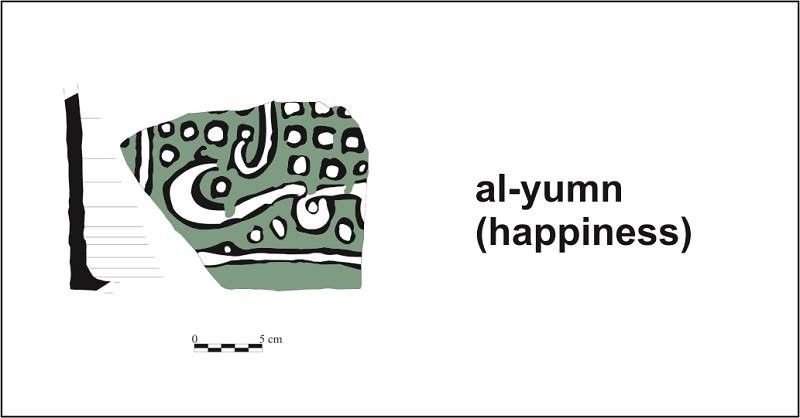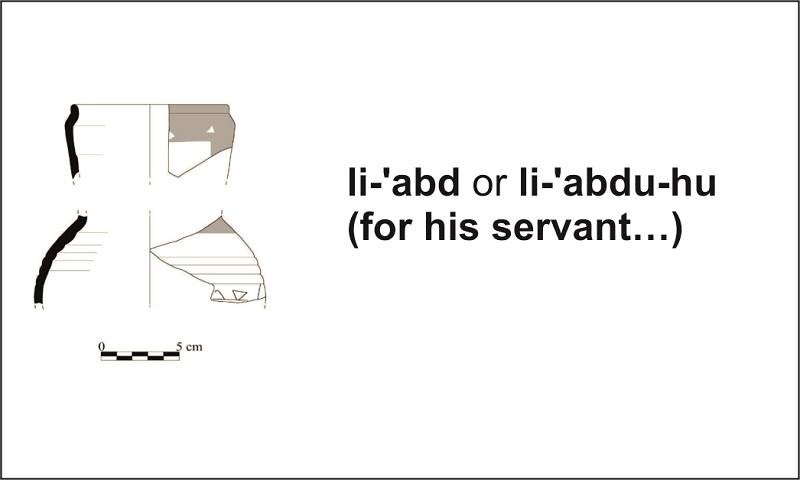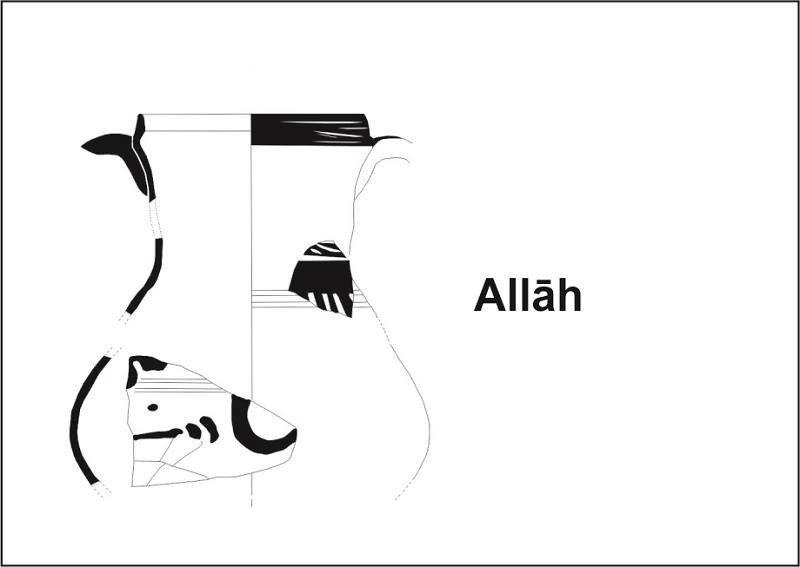Pottery with epigraphic decoration in Gibraltar



Pottery with epigraphic decoration in Gibraltar
Within Islamic art, writing is one of the main decorative themes and can be found both in marble stelae, plasterwork, wood, and tiles as well as domestic tableware.
The epigraphy is created with Kufic or Naskh calligraphy, which is more stylised and in italics. A variant of this decorative type is pseudo-epigraphy, strokes that although elegantly outlined giving the appearance of Arabic script, actually have no meaning.
On pottery, these epigraphic decorations are made using various techniques – stamping, painting, sgraffito, dry cord or enamelling. This type of ornamentation on domestic tableware carries important symbolic or religious value, using certain words or phrases that favour the preservation of food. The words that appear most frequently, are ‘al-yumm’ (fortune or happiness), ‘baraka’ (blessing), ‘al-muk’ (power) and ‘al-afiya’ (health).
The images show drawings of a dry cord chamber pot and two jugs painted with the same type of decoration.
Published: May 15, 2020
Other similar VM - Archaeology
18-20 Bomb House Lane
PO Box 939,
Gibraltar
